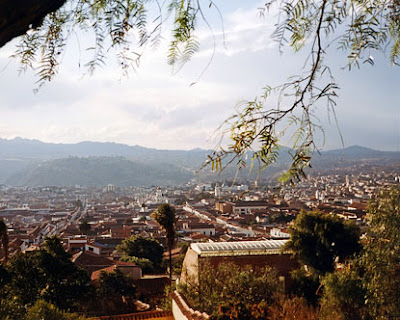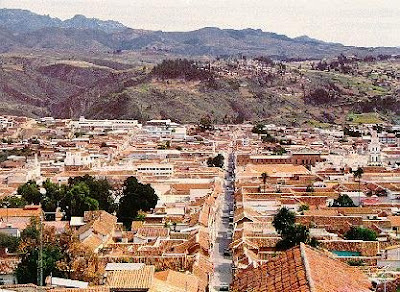Sucre is the constitutional capital of Bolivia. The city of Sucre is also known as the City of Four Names, being those names La Plata, Charcas, Ciudad Blanca (White City), and Sucre. Founded as Chuquisaca in 1538, the city received its present name in 1840, in honor of the first Bolivian president, Antonio Jose de Sucre. In 1809 Sucre became one of the first cities in South America to revolt against Spanish rule. On December 13, 1991 UNESCO declared the Historic City of Sucre a “World Heritage Site” in recognition of its rich history and its wealth of colonial architecture. The city attracts thousands of tourists every year thanks to its well-conserved downtown with buildings from the 18th and 19th century. Its many well-preserved 16th-century religious buildings illustrate the blending of local architectural traditions with styles imported from Europe. Population is 247,300 in 2006.
Sucre is the gateway to numerous small villages that date from the colonial era. The most well-known of which is Tarabuco – home of the colourful “Pujllay” festival held each March. In these outlying villages, one is as likely to find a descendant of the Spanish conquest as members of an indigenous group that still dress in their unique native clothing they use not only to preserve their cultural identity but also to let others instantly know what town or region they are from.
Sucre shares capital city status with La Paz, the legislative and administrative capital. Sucre is also a university city, with many cultural attractions, museums, shops, restaurants. San Francisco Xavier university was founded in 1625, one of the oldest universities in the Americas, and specializes in law. Relatively small, Sucre is an easily walkable city and the older sections, with the white colonial buildings with their distinctive red-tiled roofs and distinctive balconies offer nooks and crannies to explore.
The sights of the town are: Casa de la livertad РHouse located on the main plaza, where the declaration of independence of Bolivia was signed on august 6th, 1825. Portraits of presidents, military decorations, and documents are displayed. Palacio de la Glorieta- Formerly an outstanding palace owned by the wealthy entrepreneur Don Francisco de Argando̱a, it now serves as a military school. Museo de la Recoleta Рestablished by the Franciscan Order in the early 16th century. This placed served as a convent, barracks, prison, and museum. Displays anonymous paintings from the 16th to 20th centuries.
The sights of the town are: Casa de la livertad РHouse located on the main plaza, where the declaration of independence of Bolivia was signed on august 6th, 1825. Portraits of presidents, military decorations, and documents are displayed. Palacio de la Glorieta- Formerly an outstanding palace owned by the wealthy entrepreneur Don Francisco de Argando̱a, it now serves as a military school. Museo de la Recoleta Рestablished by the Franciscan Order in the early 16th century. This placed served as a convent, barracks, prison, and museum. Displays anonymous paintings from the 16th to 20th centuries.



 11:35
11:35
 Explore World - World Travel Guide
Explore World - World Travel Guide



 Posted in:
Posted in: 









1 comments:
Hi Admin your blog is very helpful for the people who are looking for
Delhi Agra Jaipur Udaipur India Tour Package
Golden Triangle Tour with Varanasi
Delhi Agra Jaipur Ranthambore Tour
Golden Triangle Tour 3 Days
Delhi Agra Jaipur Tour 4 Days
Sami World Travel
+91-9358499757, 9837303930
samiworldtravel@yahoo.com
Post a Comment